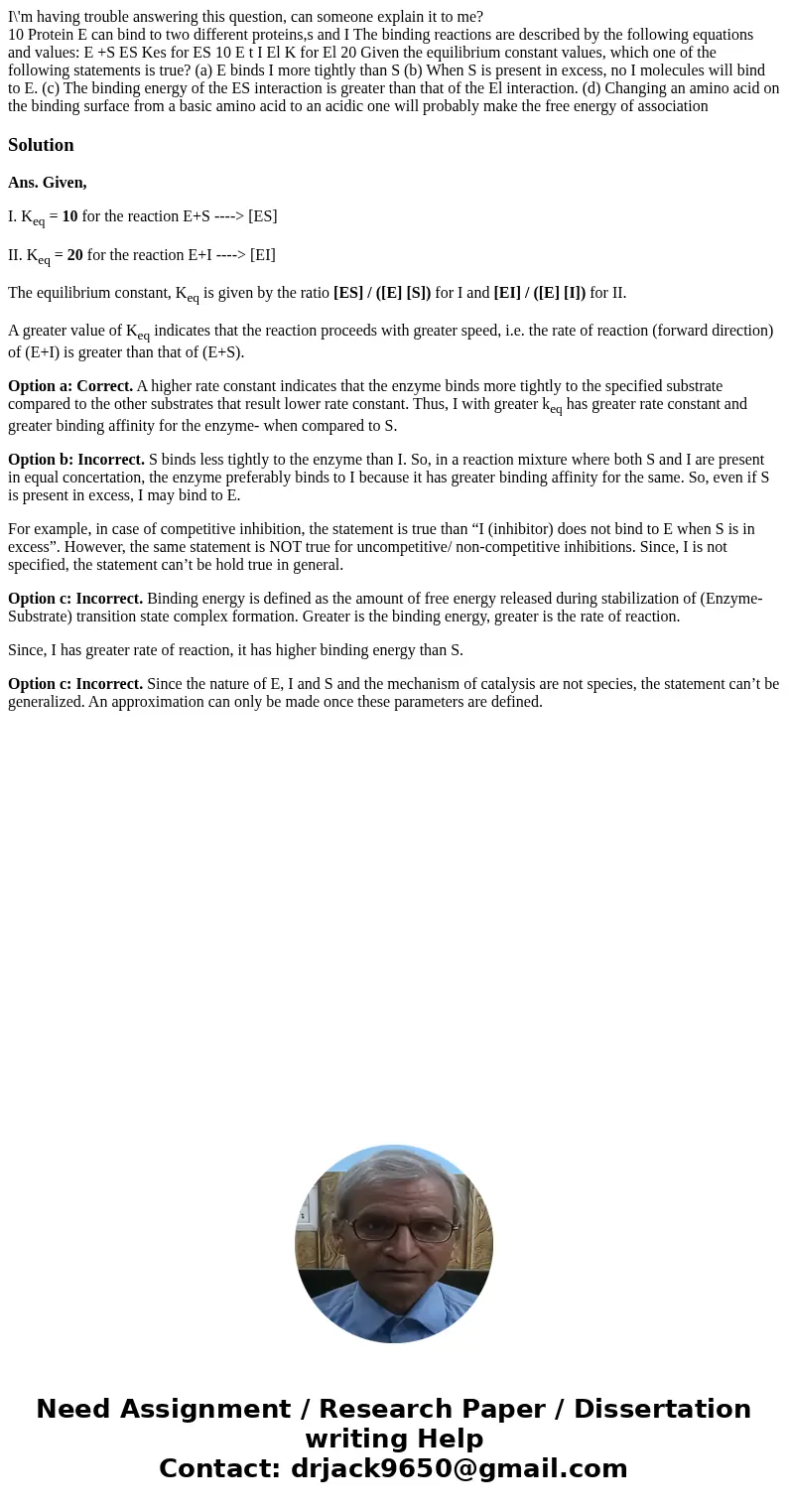Im having trouble answering this question can someone explai
Solution
Ans. Given,
I. Keq = 10 for the reaction E+S ----> [ES]
II. Keq = 20 for the reaction E+I ----> [EI]
The equilibrium constant, Keq is given by the ratio [ES] / ([E] [S]) for I and [EI] / ([E] [I]) for II.
A greater value of Keq indicates that the reaction proceeds with greater speed, i.e. the rate of reaction (forward direction) of (E+I) is greater than that of (E+S).
Option a: Correct. A higher rate constant indicates that the enzyme binds more tightly to the specified substrate compared to the other substrates that result lower rate constant. Thus, I with greater keq has greater rate constant and greater binding affinity for the enzyme- when compared to S.
Option b: Incorrect. S binds less tightly to the enzyme than I. So, in a reaction mixture where both S and I are present in equal concertation, the enzyme preferably binds to I because it has greater binding affinity for the same. So, even if S is present in excess, I may bind to E.
For example, in case of competitive inhibition, the statement is true than “I (inhibitor) does not bind to E when S is in excess”. However, the same statement is NOT true for uncompetitive/ non-competitive inhibitions. Since, I is not specified, the statement can’t be hold true in general.
Option c: Incorrect. Binding energy is defined as the amount of free energy released during stabilization of (Enzyme-Substrate) transition state complex formation. Greater is the binding energy, greater is the rate of reaction.
Since, I has greater rate of reaction, it has higher binding energy than S.
Option c: Incorrect. Since the nature of E, I and S and the mechanism of catalysis are not species, the statement can’t be generalized. An approximation can only be made once these parameters are defined.

 Homework Sourse
Homework Sourse